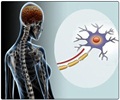Dalfampridine Medication Information
Discover comprehensive details about Dalfampridine, including its pronunciation, uses, dosage instructions, indications, and guidelines on how and when to take it or avoid it.
The updated prescription information covers potential side effects, precautions, warnings, and storage recommendations.
Additionally, explore the Dalfampridine brands available in India and internationally, along with pricing information. For personalized advice, consult your healthcare provider.
Generic Name : Dalfampridine Pronunciation : dal-FAM-pri-DEEN Therapeutic Classification : Potassium channel blockerBrand Names or Trade Names of Dalfampridine
International :
Ampyra
Why is Dalfampridine Prescribed? (Indications)
This medication is a potassium channel blocker, prescribed for improvement of walking in patients with multiple-sclerosis It strengthens brain signals through the nerves that have been damaged by MS.When should Dalfampridine not be taken? (Contraindications)
Contraindicated in patients with seizures, severe kidney impairment, and hypersensitivity.What is the dosage of Dalfampridine?
PO- The maximum recommended dose is one 10 mg tablet twice daily, taken with or without food, and should not be exceeded.How should Dalfampridine be taken?
It comes as a tablet to take by mouth, with or without food twice a day.What are the warnings and precautions for Dalfampridine?
• Caution should be exercised in patients with history of kidney disease, urinary tract infections, abnormal electroencephalogram (EEG), any allergy, who are taking other medications, elderly, children, during pregnancy and breastfeeding.• It may cause dizziness, do not drive a car or operate machinery while taking this medication.
• Monitor kidney function regularly while taking this medication.
What are the side effects of Dalfampridine?
Central Nervous System - Sleeplessness, dizziness, headache, weakness, balance disorder and tingling.General - Nausea, vomiting, back pain, constipation, condition become worsens, indigestion, throat pain and urinary tract infection.






